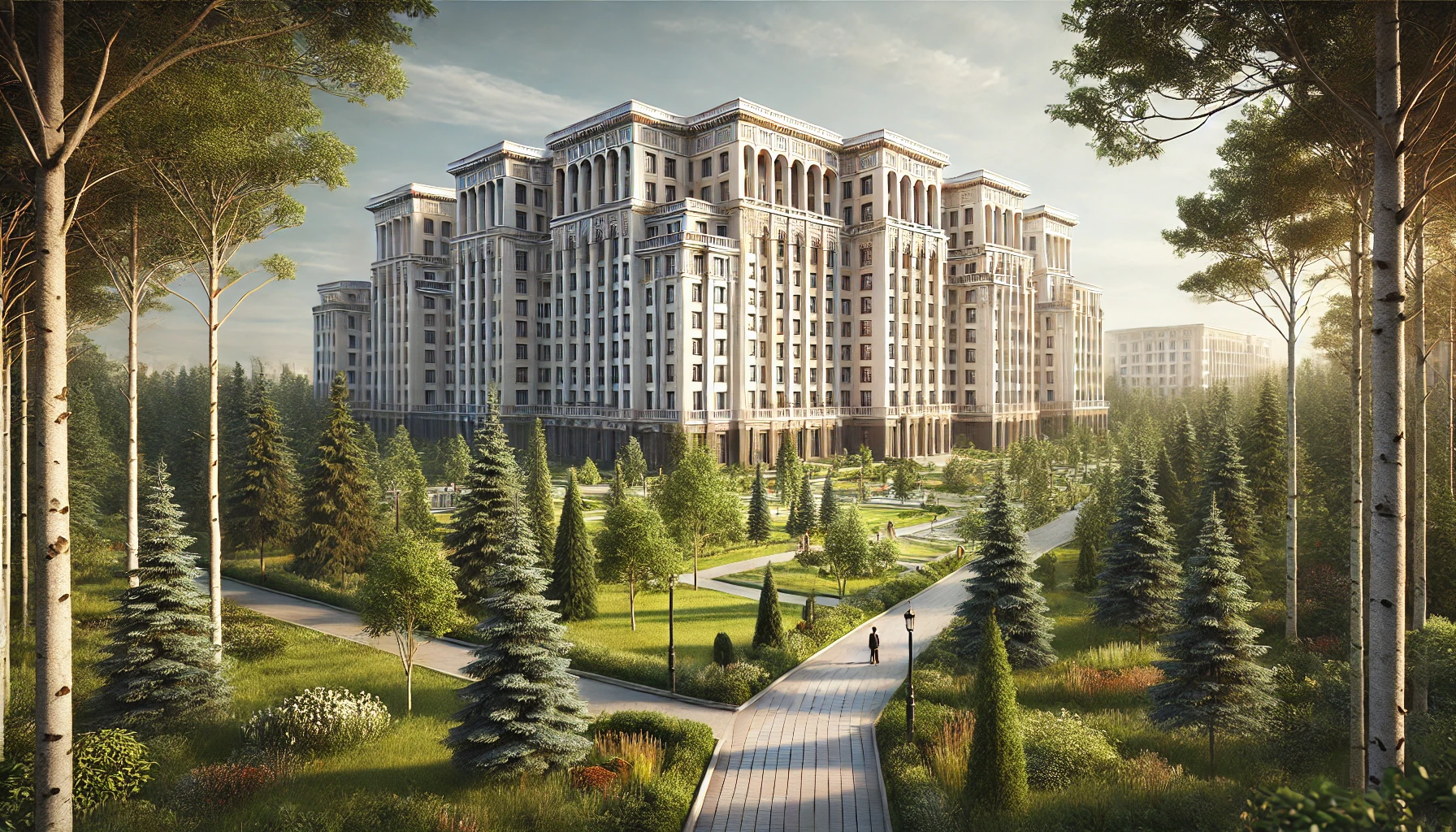Did you know that architecture, alongside many other factors, affects our lifespan? In ancient, highly developed civilizations, this was well understood, and buildings and structures were designed according to the principles of the “golden ratio.” Such architecture aligns the rhythms of the human body with the natural rhythms of nature, strengthening immunity and extending life.
Ancient Knowledge and Its Impact on Longevity
This understanding may explain why people in ancient times, long before the Great Flood that wiped out much of humanity and erased important knowledge, lived much longer than we do today. As V. Shemshuk writes in his book Meeting with the Immortal Koschei:
“Before the Flood, people lived an average of 1,000 years or more. This was not solely due to special diets, as the Greek philosopher Thales believed. While the food of our ancestors was indeed different — free of herbicides, pesticides, mineral fertilizers, and genetic modifications — the secret to their longevity lay in living in harmony with the surrounding world.”
When a person achieves resonance with the rhythms of nature, they do not get sick or grow weak. The Bible mentions that Methuselah lived for 969 years, Noah for 950 years (350 of which were after the Flood), and Noah’s son Shem for 600 years. Shem’s son Arphaxad lived 465 years, with lifespans shortening in subsequent generations. Moses lived just 120 years, Joseph 110 years, and modern humans, on average, live slightly more than half a century. Longevity gradually diminished as natural habitats were destroyed.

The Role of the “Golden Ratio” in Architecture
The Egyptian pyramids at Giza, based on the “golden ratio,” which is present in all geometric forms of nature, have remained intact because the vibration frequencies of living organisms sustain them in resonance. Despite being built much earlier than later Egyptian pyramids designed around triangular forms, the latter have largely deteriorated.
A strong correlation between large and small structures creates an energy-information exchange — the transfer of energy. When vibration frequencies match, the form remains stable and intact. The same principle applies to humans: if the vibration of a building aligns with or harmonizes with a person’s vibration, it supports health and longevity. Conversely, mismatched vibrations can slowly harm the person.
Harmony in Construction and Life
Properly designed buildings last longer, are beautiful, and are functional. Similarly, furniture, clothing, and interior designs that resonate with a person’s vibrations can enhance their cellular vibration, positively influencing health and development. Architecture should be multifunctional — providing protection, clean air, food and energy.Our ancestors employed not only the “ratio of life” but also other proportions, such as the ratios of perfection, creativity, and harmony.
Leonardo da Vinci discovered that the human body also adheres to the principles of the “golden ratio.” Therefore, buildings should harmonize with the rhythms of nature to promote health and longevity. The Leningrad architect I.P. Shmelev demonstrated this by designing his home according to the principles of the “golden ratio.”
The Negative Impact of Modern Architecture
Unlike harmonious buildings, modern structures often disregard the laws of nature. Angular high-rise buildings, such as the so-called “Khrushchyovkas,” are not only aesthetically unappealing but also detrimental to health. These constructions disrupt the harmony between human and natural rhythms, causing stress and weakening the immune system.

It is no surprise that the architecture of modern cities is linked to health issues. Urban “concrete jungles,” filled with monotonous buildings, suppress individuals both physically and mentally, accelerating aging and the onset of chronic diseases.
Bionic Architecture: A Path to Harmony
Bionic architecture, which draws inspiration from natural forms and processes, may hold the key to addressing these issues. By utilizing the principles of the “golden ratio,” creative forms, and resonant structures, it is possible to create buildings that harmonize with human life. Such structures not only beautify cities but also improve health by enhancing cellular vibrations.
The Leningrad architect I.P. Shmelev was one of the first to apply the “golden ratio” in modern architecture. His work demonstrates how harmonious proportions can improve the quality of life and contribute to longevity.
A Historical Perspective on Architecture
The revival of harmonious architectural principles became evident during the era of Stalinist Empire style. This style, reminiscent of ancient architecture, emphasized beauty and harmony. However, after Stalin’s death, most of these buildings were replaced by simplistic, straightforward constructions, reflecting the simplification of both architecture and life philosophy. A similar degradation of architecture occurred throughout Europe and the United States.
The destruction of harmonious buildings and their replacement with primitive forms was no accident. It was part of a broader trend aimed at the degradation of humanity and a decline in quality of life.
The Future of Architecture: A Return to Roots
Humanity must reconsider its methods of construction. Reviving harmonious architecture, incorporating bionic forms, and adhering to the principles of the “golden ratio” is not merely a quest for beauty. It is a pathway to restoring harmony with nature, improving health, and extending life.
Architecture is not only about aesthetics; it is also a tool for influencing consciousness, emotions, and physical well-being. By designing buildings that resonate with natural rhythms, we can return to a path of evolution and a harmonious future.








